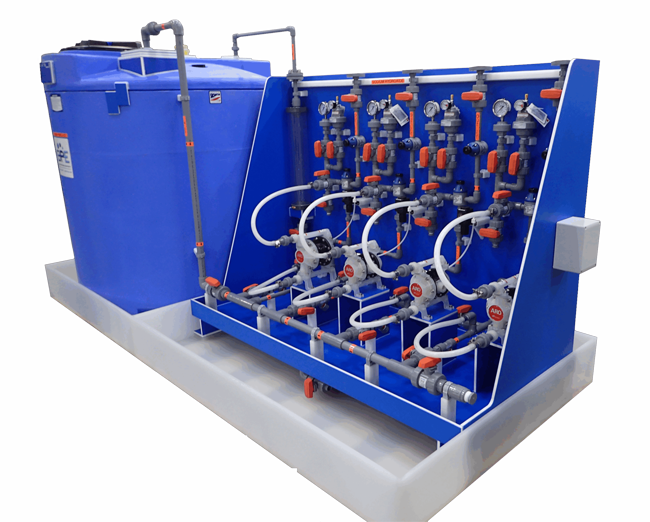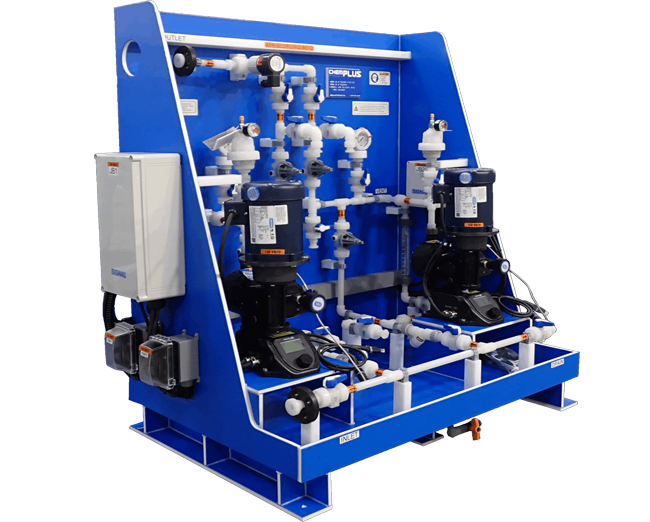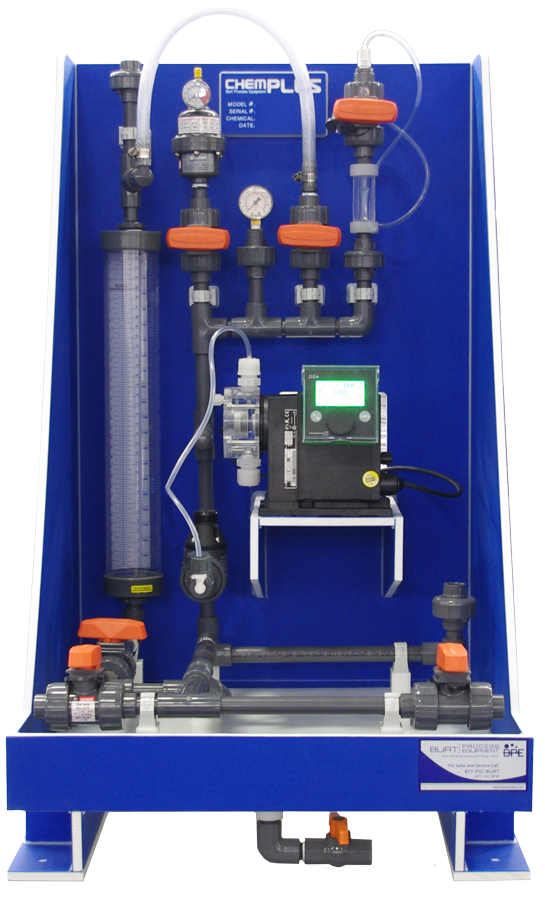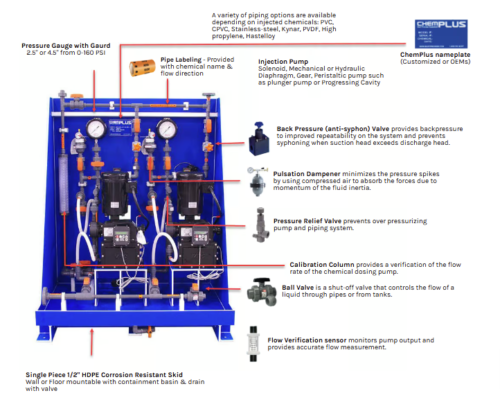

Pre-engineered & Custom Systems For Precision Treatment Applications

Pre-engineered & Custom Systems For Precision Treatment Applications

Chemical feed systems are offered in pre-engineered & custom designs to precisely and automatically dose chemicals to meet any application’s requirements. Burt Process ChemPLUS systems are fabricated using highly corrosion-resistant, skid-mounted solutions available in multiple configurations and pump technologies to meet a wide range of industrial and municipal applications. Designed for reliability and ease of integration, they support consistent performance across diverse chemical dosing needs.


Burt Process’s pre-engineered Chemical Dosing Systems offer a wide range of components options, pump selections, and piping arrangements needed to customize chemical injection solutions. Our systems can be skid or wall-mounted and are designed to inject chemicals into wastewater treatment flows.
Chemical Dosing Systems are used in water treatment applications that require the mixing, storage, and precise dosing of chemical reagents. Dosing the correct chemical at the optimum rate is important to acquire effective operation and achieve optimal long-term application performance.
Simplex w/ selectable components
Duplex Arrangements include:
Triplex Arrangements include:
Components used in a Chemical Dosing System play a significant role in allowing an operator to adjust flow, pressure, and calibrate to achieve repeatable performance. Burt Process designs and manufactures customizable chemical dosing systems.
The Duplex chemical dosing system is assembled within a fabricated, single piece 1/2″ HDPE corrosion-resistant skid, is wall or floor mountable, and includes a containment basin with drain and valve

Documented Factory Testing Includes:
Various materials and different types of chemical feed pumps can be used as part of chemical feed systems. Water treatment, for example, brings its own challenges and requirements, such as the need for a high flow rate, non-corrosive materials to handle aggressive chemicals, and low maintenance. Selecting the right metering pump size for your application is also critical. A chemical dosing pump calculation to determine the proper size requires the chemical injection (flow in GPM, dosage, and solution strength), strokes per minute (SPM) and pump rated output (in GPD or gallons per day).
Chemical Feed Systems are designed for automated chemical injection into the chemical feed tank for water or wastewater treatment. In the dosing process, chemical reagents are added into a water stream at a precisely controlled rate with positive displacement metering pumps. Burt Process Chemical Metering systems have revolutionized the concept of chemical dosing by providing pre-engineered and fully customizable pieces of equipment for water treatment.
Our ChemPlus Chemical Dosing System is a pre-engineered solution that can be effectively used in many different industries and in a municipal water process. These are high-performance sodium hypochlorite dosing systems — for example when used for disinfecting potable water or as part of a chemical scrubber system. A compact and lightweight prepackaged skid, corrosion resistance, flexibility of metering pump option, and easy maintenance are some of the advantages of our advanced chemical feed systems.
Water treatment uses include disinfection (injection of Peracetic acid – PAA), fluoride treatment, sodium bisulfite metering, sulfuric acid dosing, sodium hypochlorite systems, dispersant polymer dosing, sodium hydroxide feed, potassium permanganate dosing, coagulation & flocculation, hydrochloric acid metering, alum feed, pH neutralization, and antiscalant addition.